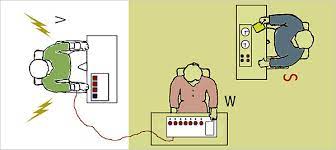Management Individual Reflection
Introduction
Throughout this module, I have been able to experience learning in different dimensions and acquired new knowledge on research writing, management, and academic analysis. Reflection helps in the development of structured thoughts, which are essential in facilitating developments in studies and one’s profession in the future. The experiences have taught me the importance of setting objectives and ensuring that they are constantly reviewed to ensure no loss of focus.
Furthermore, I have realized that learning is achieved best through experience. The Management Individual Reflection project done in this module enabled me to learn more skills in project management in media and communication system. The project enabled me to discover my strengths, weaknesses, opportunities for future development that surfaced and threats (Husebø, Regan and Nestel 2015).
My self-awareness was significantly developed. I was able to understand my core values, desires, beliefs, unique talents, emotions, and attitudes. The success of my project in this module started from my personal growth (Duval, Silvia and Lalwani 2012). The transformation of my perceptions, beliefs, and attitudes enabled me to work on the work more objectively.
My cognitive- behavioral processes such as self-regulation, self-esteem, self-evaluation, emotions, sense of agency and the theory of mind helped me to analyse of my observation findings. The experience was accompanied by frustrations from which some were totally unpredictable (Demetriou and Kazi 2013). However, my emotional intelligence helps me stay motivated and remain persistent so that the distress would not distract me from thinking.
The mentality assisted me in holding up the zeal to keep on learning and grasping new ideas. Through the application of all these skills, my expectation in achieving the objectives was met (Voss, Holzmann, Hobson, Paulus, Gossel, Klimke and Nitsche 2014).
Management Individual Reflection Experiential Learning Theory
There are different theories, which helped me to analyze my project experience and to carry out a comprehensive reflection of the same. The Kolb’s Experiential Learning Theory consists of a cycle of four consecutive phases, which are associated with comprehensive reflection. These include concrete experience, reflective observation, abstract conceptualization and active experimentation. The experience acquired immediately acts as the basis on which observations can be made. After the observations are recorded the student will then need to reflect on them.
Assimilating the reflections and ensuring that proper clarifications are done to come up with the proper actions, which are in line with the objectives and set goals of the project, achieve the abstract conceptualization. This theory also indicates that learning is a continuous process. That once the learner reaches the active experimental phase, another topic of study within the same orientation emerges (Kolb and Kolb 2012)
The theory applied to my project such that, the experiences gained during the process of deciding on my objectives, collecting data and analyzing was used in my reflection. On reflecting on the information, I was able to conceptualize it into the suitable areas of research. For example, the research of how museums were used as sites for activism promotion, I was able to search for all museums in the UK then narrowed down to those created for specific purposes and finally those used for activism.
This way I was able to retain the concept without losing focus. Finally, on active experimentation, I included the activities that happen on the ground by the activists to ensure that their goals are achieved (Timmins and Neill 2013).
Gibb’s Reflective Cycle
The other model of reflection used is Gibb’s Reflective Cycle, which consists of 6 stages. These stages include; description, feelings, evaluation, conclusion and action plan. Description involves precise explanation on the topic of the project and ensuring that the main point is not lost between many words. Here the background information on the issue, which the student is to reflect on, is needed to get the scope.
The information should remain relevant. Feelings are essential because they are used to bring out the expression of how the experience was like. The writer needs to discuss their emotions honestly but stick to academic writing and avoid informality. During the evaluation, the writer needs to discuss how things happened and what reactions were expressed in response to the specific incidences.
This should include both positive and negative incidences, and in case any of them were resolved in the future. The conclusion includes a review of the mistakes done and what would have been done instead. Also, the writer should consider some different ways of responding to a situation better than they have done in the current project. They should also identify the positive responses, which they should consider being repeated in the future.
The action plan includes the knowledge acquired out of the whole experience and how to improve on it in the future. The specific actions needed to achieve the improvement should be considered such as attending training or reading widely on a topic (Husebø, Regan and Nestel 2015).
Reflection of Positive Experiences
During my research, I was able to encounter several positive experiences. On researching about the low-wage workers and intern deployment, I found out that the two categories of workers comprise of the main workforce in the media and creative industry. This helped me therefore to read more about the specific duties entitled to them. I was able two also learn more about the two types of capitalism. Initially, when I chose the topic, I did not know which databases to use and went blank for a few hours before starting the project.
Another positive experience was that I was able to understand how to analyze a piece of media by separately identifying the representation used to pass information to the audience (Csikszentmihalyi 2014). This was so exciting because on studying the pieces of media, I found out that a lot could be traced out such as the culture of the people, their race, language, and age.
Additionally, I had initially assumed that museums are only meant for recreational activities. This project enabled me to discover that most of the currently constructed museums have themes defining their purposes. In fact, most of them speak a lot on behalf of organizations and activists. Furthermore, many of them are not eco-friendly (Paterson and Chapman 2013).
This knowledge enabled me to learn on areas of study with more emphasis on the activists’ actions concerning the pollution of the environment. My receiver objectives outweighed those that were not achieved, and this gave me a feeling of satisfaction. 97% of the total objectives were achieved whereby only 3% were not and which were marked for future improvement (Wald, Borkan, Taylor, Anthony and Reis 2012).
Reflection on Negative Experiences
The experiences I encountered on this module were not all smooth because I also had to face some frustrations. The study was fascinating but I felt it would be more inductive of I got to visit the studied sites personally for visual learning. This was not possible because of the tight program and inadequate funds (Bourke 2014). The budget of this project was quite expensive hence this could not be achieved.
Nevertheless, some of the academic sources available in the library were so outdated and not resent version could be found. This caused my project partially not to match with the current situations in the world (Cowan 2014). I felt disappointed and incompetent because I had not met the objective of using all the relevant sources. The time frame for the project was short, and I felt that much would have been researched on if the period had extended. In fact, the rest of the work done during the last days was not done with much keenness because I was working against time, which seemed to move so fast (Hartley 2012).
Conclusion
The application of reflection was essential because by marking all the incidences in my experience, I was able to find out what I need to involve for my projects to be successful. I understood that my motivation contributes a significant portion towards my competence. On identifying the positive outcomes, I was enabled to emphasize on them in my future projects.
The negative outcomes were discouraging, but I chose not to be discouraged but to remain focused and find a way of avoiding any activities resulting in similar outcomes in the future. Moreover, reflection helped me to retrospectively think out on how things would have been better if some activities were done differently. This also served as a good lesson for my future improvement.
References
Bourke, B., 2014. Positionality: Reflecting on the research process. The Qualitative Report, 19(33), pp.1-9.
Cowan, J., 2014. Noteworthy matters for attention in reflective journal writing. Active Learning in Higher Education, 15(1), pp.53-64.
Csikszentmihalyi, M., 2014. Toward a psychology of optimal experience. In Flow and the foundations of positive psychology (pp. 209-226). Springer Netherlands.
Demetriou, A. and Kazi, S., 2013. Unity and modularity in the mind and self: Studies on the relationships between self-awareness, personality, and intellectual development from childhood to adolescence. Routledge.
Duval, T.S., Silvia, P.J. and Lalwani, N., 2012. Self-awareness & causal attribution: A dual systems theory. Springer Science & Business Media.
Hartley, J., 2012. Communication, cultural and media studies: The key concepts. Routledge.
Husebø, S.E., O’Regan, S. and Nestel, D., 2015. Reflective practice and its role in simulation. Clinical Simulation in Nursing, 11(8), pp.368-375.
Kolb, A.Y. and Kolb, D.A., 2012. Experiential learning theory. In Encyclopedia of the Sciences of Learning (pp. 1215-1219). Springer US.
Paterson, C. and Chapman, J., 2013. Enhancing skills of critical reflection to evidence learning in professional practice. Physical Therapy in Sport, 14(3), pp.133-138.
Timmins, F. and Neill, M.F., 2013. Reflections on Reflection: An Audit of Students’ use of Structured Models within Specific Assessments. Procedia-Social and Behavioral Sciences, 93, pp.1368-1370.
Voss, U., Holzmann, R., Hobson, A., Paulus, W., Koppehele-Gossel, J., Klimke, A. and Nitsche, M.A., 2014. Induction of self awareness in dreams through frontal low current stimulation of gamma activity. Nature neuroscience, 17(6), pp.810-812.
Wald, H.S., Borkan, J.M., Taylor, J.S., Anthony, D. and Reis, S.P., 2012. Fostering and evaluating reflective capacity in medical education: developing the REFLECT rubric for assessing reflective writing. Academic Medicine, 87(1), pp.41-50.
Want help to write your Essay or Assignments? Click here.









